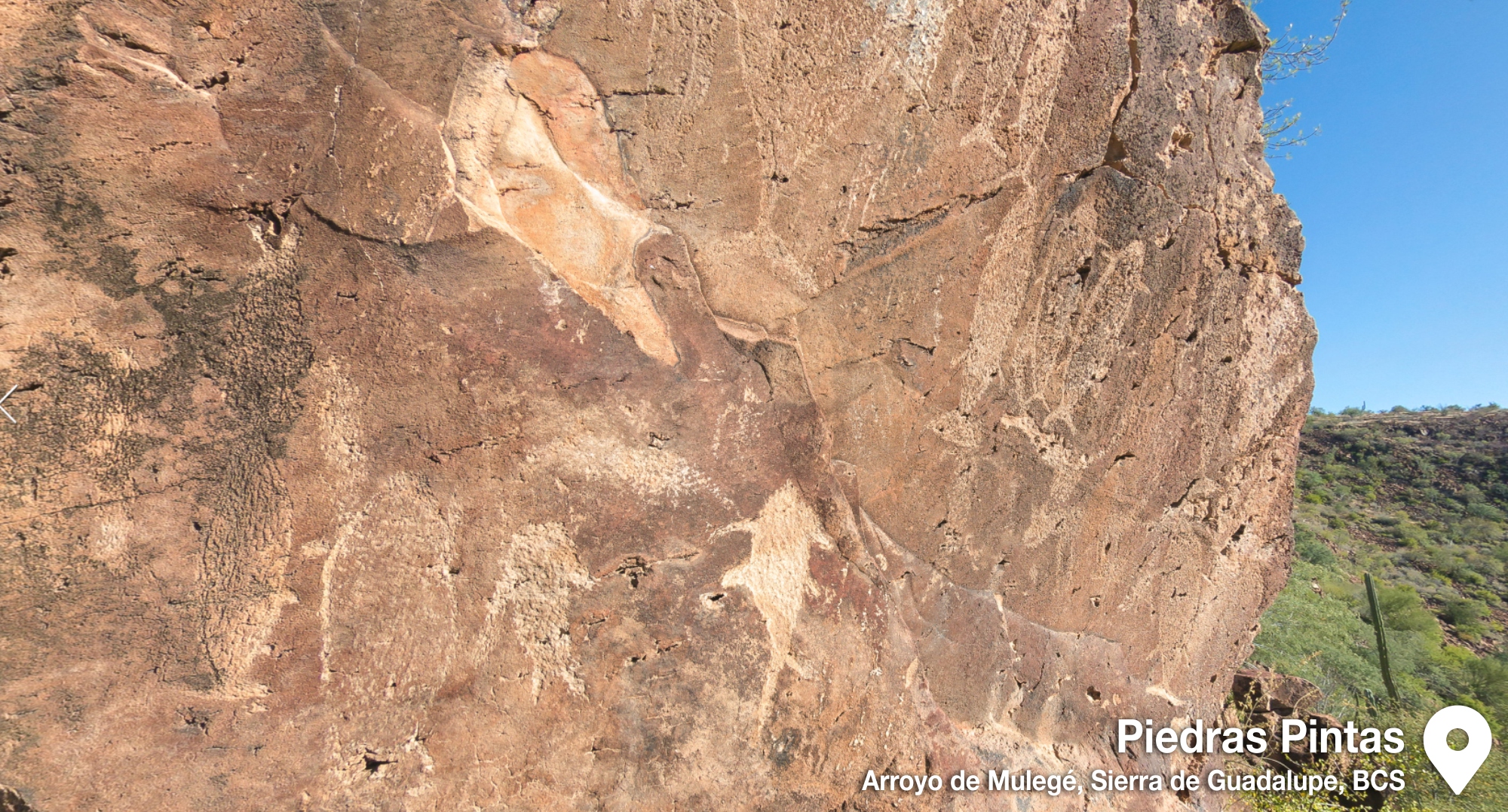Piedras Pintas

Piedras Pintas is an open site, that is, outdoors, and is located very close to the town of Mulegé, in the municipality of the same name, and is one of the most extraordinary and extensive monumental sites of the parietal art of the peninsula of Baja California The site is located on a hill and can be seen profusely in a wall full of stones and also on the top of the hill that begins the folds of the mountains. The main characteristic of this expression is defined by the engraving on rocks of volcanic origin, which are always subject to the effects of solar radiation, abrupt temperature changes, rain and the fury of hurricanes that with climate change have accentuated in that peninsular region. Despite all this, its conservation status allows these petrogravines to still be appreciated in a natural environment of great beauty. The words "petrogravure" and "petroglyph" have been used interchangeably to designate this sensitive manifestation made by the ancient settlers who lived in that peninsular region. Although there are still no dates of these cultural expressions, according to some scholars many of the petroglyphs were made in a time parallel to the creation of cave paintings. For some time the petrogravites were also considered as the most immediate antecedent to cave paintings and with that criterion we sought to find the relationship between these two manifestations that were copiously elaborated on the surface of the rocks. The obviousness of the main theme of Piedras Pintas, as you can see, is related to a marine environment because the forms achieved allude or evoke animal life in the sea, mainly fish, as if the relationship of the indigenous populations of that region outside that of a culture “turned to the sea”. On the other hand, Piedras Pintas also houses some of the most complex figures or “forms” of the rock engraving that can be observed in the peninsula of Baja California and whose explanation is still to be built.
Detalles
Lugar: Mulegé, Mulegé
Dirección: Muy cerca de Mulegé, Baja California Sur.
Página web: Sendarupestre.cultura-bcs.gob.mx

